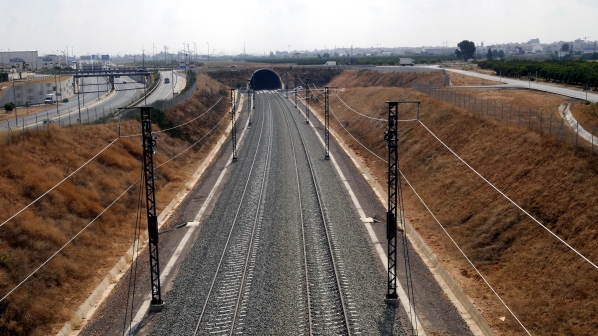Last week, Adif AV carried out 386 test trips between L’Hospitalet de l’Infant and the Camp de Tarragona high-speed station, crossing the La Boella gauge changing facilities, and between L’Hospitalet de l’Infant and the 1668mm gauge station at Tarragona. The company says the initial results from the tests, carried out with an S-121 series EMU equipped for operation using 3kV dc and 25kV ac electrification, were positive.
The latest tests also included operation with Adif’s test train and a conventional train to test the reliability and stability of the track, electrification, signalling and ERTMS Level 1 on both the 1668mm gauge and standard gauge sections.
The final phase of testing before the line is commissioned will include training national operator Renfe’s staff on the route, which will begin once the final report on the infrastructure testing has been completed. Certification for the route is also underway, and Adif says it could be opened by the end of the year if there are no unforeseen circumstances.
The nearly €700m section, which is suitable for both high-speed and mixed traffic, will connect the Mediterranean Corridor from Vandellós with the Madrid - Barcelona - French border high-speed line and with the Tarragona - Reus 1668mm gauge line, reducing Barcelona - Valencia travel times by around 30 minutes.
The new line will also eliminate the current single-track route through the coastal area of southern Tarragona, improving safety for the towns along the route. The section includes the 1.9km Rojales tunnel and 9.1km of viaducts, including the 3485m Francolí viaduct and the 746m Cambrils viaduct.
The project was co-financed by Trans-European Transport Networks (TEN-T) grants totalling €21.3m in the 2007-2013 period. The Connecting Europe Facility (CEF) provided €40.3m to co-finance the track, electrification and facilities during the 2014-2020 period.
An in-depth review of high-speed projects around the world from IRJ Pro will appear in the November issue of IRJ.

